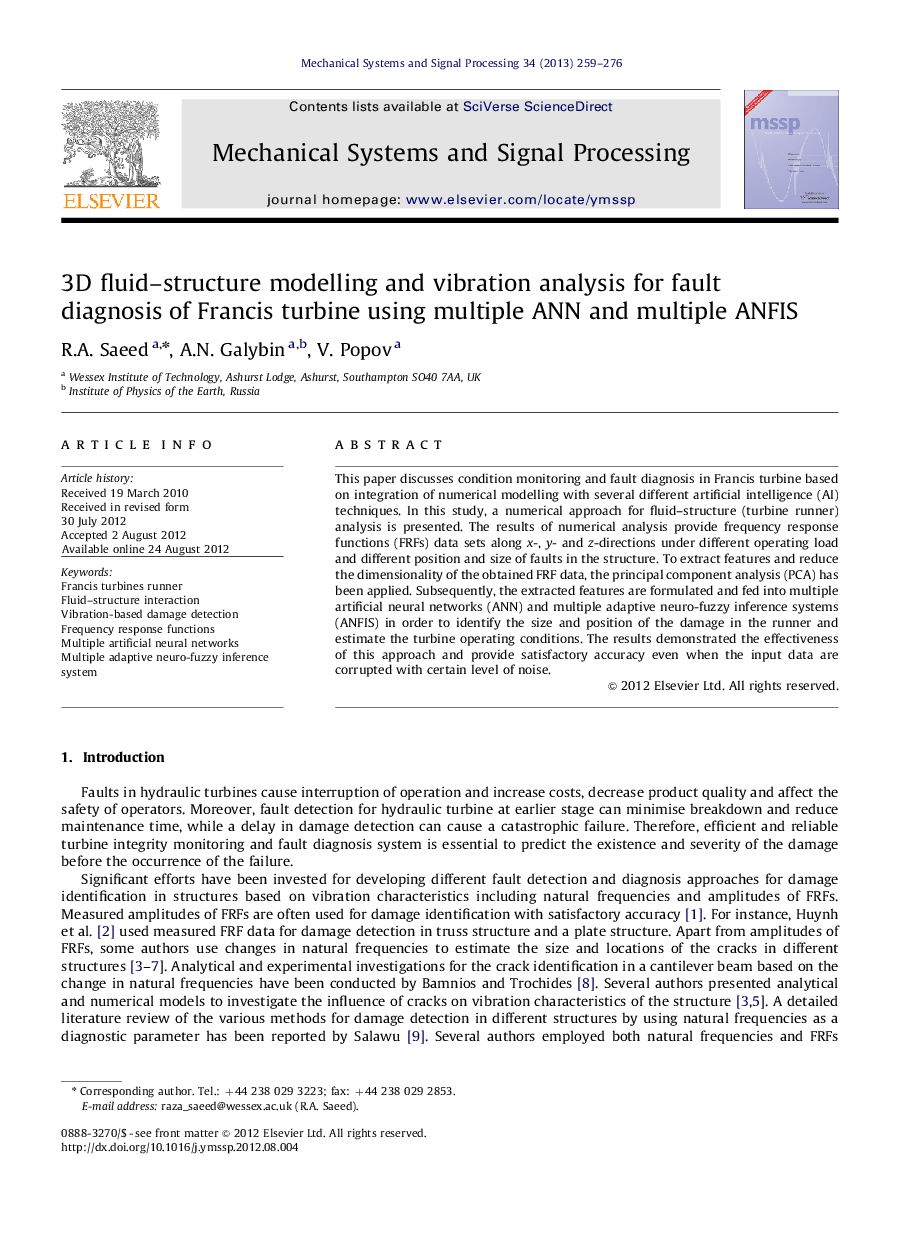| Article ID | Journal | Published Year | Pages | File Type |
|---|---|---|---|---|
| 560643 | Mechanical Systems and Signal Processing | 2013 | 18 Pages |
This paper discusses condition monitoring and fault diagnosis in Francis turbine based on integration of numerical modelling with several different artificial intelligence (AI) techniques. In this study, a numerical approach for fluid–structure (turbine runner) analysis is presented. The results of numerical analysis provide frequency response functions (FRFs) data sets along x-, y- and z-directions under different operating load and different position and size of faults in the structure. To extract features and reduce the dimensionality of the obtained FRF data, the principal component analysis (PCA) has been applied. Subsequently, the extracted features are formulated and fed into multiple artificial neural networks (ANN) and multiple adaptive neuro-fuzzy inference systems (ANFIS) in order to identify the size and position of the damage in the runner and estimate the turbine operating conditions. The results demonstrated the effectiveness of this approach and provide satisfactory accuracy even when the input data are corrupted with certain level of noise.
► We model multiple ANFIS and ANN techniques for monitoring turbine conditions. ► Vibration characteristics of a turbine simulate by integrating fluid and runner model. ► The PCA is use to reduce input information from vibration signals. ► Sensitivity of multiple ANFIS and ANN techniques are investigated by adding noise. ► Multiple ANN can provide better results compared to multiple ANFIS and Multiple ANFIS is less sensitive to noise than the multiple ANN model.
